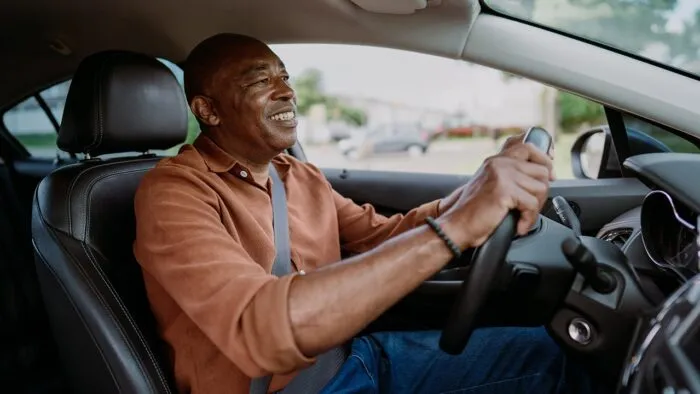David Regn is Co-Founder and CEO of Stream Companies, which bills itself as a “full-service, fully integrated, tech-enabled ad agency.” Boris Lopez is Director of Operations at ToyTech Motors, a company that uses client data to help South Florida car dealers optimize business processes and human talent. Boris is also a Founding Partner at Florida’s South Dade Kia, and a Director at South Dade Toyota.

Each has been in and around the automobile industry for more than two decades and they contribute valuable insights and perspectives within Effectv’s Automotive Advisory Council, an advocacy group, comprised of auto leaders from agencies, dealers, and manufacturers. In separate interviews, they shared their thoughts and opinions about how the industry got where it is today, and how it’s likely to change in 2022 and beyond.
Where We Are and Why
To say the auto industry is in flux is an understatement. Many dealers experienced booming profits despite a global pandemic that often has kept buyers at home but has not necessarily reduced demand. The pandemic has also drastically reduced new vehicle supplies. That reduction in availability of new vehicles has created situations where used vehicles are more expensive than newer alternatives.
Neither David nor Boris is surprised by any of this. David said supply chain issues, increased demand for personal transportation, and shutdowns all have created pent-up demand. “Dealers don’t have to discount cars as much, and OEMs don’t have to offer as many incentives.” Those dealers are also seeing fewer trade-ins. In addition, new players in the market, such as Carvana are also driving up prices at used car auctions. “When the new car inventory goes up and dealers see more trade-ins, those dealers don’t have to go to auctions.”
All these factors have contributed to record profits for dealers. David expects this will continue early in 2022, but “a day of reckoning is coming. There may not be one event that flips the switch, but it’s definitely going to happen.”
He added that sometime this year, used car prices will start to fall. New car supply will also continue to grow. This will put pressure on OEMs and dealers to reinstate incentives and discounts. “I don’t see this happening all at once, but it’s coming.”
Boris said supply issues will likely continue, but that demand may already be falling off. “The data says we’re still going to be short on new car inventory in 2022, despite manufacturing increasing. [In most years,] the first three months of the year are usually strong, thanks to tax returns and the like. That’s not happening this year. People seem to think used cars are a stupid investment right now. They’re waiting to see if prices come down and more new car options appear.”
Respected market watcher, Cox Automotive, estimated February automobile sales in the U.S. to be approximately 1.05 million, a level that has been consistent since at least August 20212. The company forecast annual new vehicle sales as of February’s end to approach 14.4 million, down from both the previous month’s level of 15 million and last year’s 15.9 million.
The EV Effect
Another change agent likely to affect the industry in 2022 is the growth of electric vehicles, or EVs. EVs are “totally shifting the marketplace” according to David. “Everyone is in the EV game – I purchased my first EV in 2021.”
However, both David and Boris believe that except for Tesla, EV sales may be more muted in 2022 than media coverage might indicate. Tesla didn’t have the supply chain issues the OEMs had, in part because Tesla manufactures parts that other companies are forced purchased, and those other companies’ supplies were limited when their sources were hobbled by the pandemic.
“They have a nice jump-start,” David said. Boris agreed. “Tesla did a great job of creating demand. My 11-year-old son already wants an electric car, because it protects the environment and because it’s cool.”
However, both gentlemen expect interest and demand to outstrip supply for at least the next 12 to 18 months. And although Kia is one of the earliest movers to EV, but is unlikely to make more than 3,000 available this year, while Toyota is unlikely to produce more than 2,000. “Aside from Tesla, the volumes are not going to be that great in 2022. But this will change by 2024 or 2025” according to Boris. David concurred. “The fact that [EVs accounted for] 2% of [total] sales during 2021 is remarkable, but even if we triple that, it’s still only 6% of total sales.”
Some market watchers are a bit more optimistic. Tom Libby is Associate Director of Automotive Loyalty Solutions and Industry Analysis at IHS Markit, a market research and analysis firm. In a February 2022 presentation, he estimated EV market share at 3%, and forecast growth to 5% in 2022 and 7% in 2023.
However the numbers ultimately play out, both David and Boris expect EV interest to remain high. As Boris noted, manufacturers are competing to bring EVs to market in part to take advantage of government incentives, such as infrastructure investments and discounts. For example, the bipartisan infrastructure bill President Biden signed in November 2021 allocates $7.5 billion for EV charging stations across the United States. “Also, the price of gas is not coming down, which will motivate people to consider and purchase EVs.”
Nonetheless, David believes potential roadblocks loom. “A lot of people who originally bought Teslas did so as third or back-up cars. When more buyers start buying EVs as their primary vehicles, many may not know exactly what they’re getting into” regarding factors such as access to charging.
The OEMs are promising to rapidly become “all-EV” soon, but “I’m not sure we have the infrastructure to support that” or how long that infrastructure will take to grow. Also, “we really don’t know that well” the true cost of ownership of an EV compared to traditional vehicles.
It’s (Still) All About the Buyer
Even as change roils the automotive marketplace, one thing remains clear: continued dealer success depends largely on the buyer experience. Dealers “truly need a strategic plan for how they go to market” as the market continues to evolve, David said. “You also need to prepare to deliver a delightful customer experience” in competition with Tesla, Carvana, CarMax, and others. “Dealers have to kind-of readopt” a focus on customer experience, to embrace those buyers willing to discover, research, and even purchase online. “For the dealers that are not actively having this conversation with their staff and asking how to deliver a great customer experience, those dealers are going to lose customers to other players in the space.”
Boris agreed, adding that the pandemic has accelerated the evolution of buying and selling processes. “Dealers understand they need to be where the buyer is. Customers are gaining more control over the negotiation and purchase processes. Again, Tesla has led this charge, but others are catching up,” he said.
For example, Boris and his team are testing Toyota’s SmartPath digital retail solution. “I love it, the dealers love it, and the customers love it. Negotiations are minimized, prices are clear, and option choices are easily accessible.” He added that the role of his salespeople is becoming more advisory and consultative. And the system is designed to allow customers to move seamlessly between the online and in-person arenas. “Some people still want to touch and test-drive the cars, but the younger generation wants to buy cars as easily as they shop at Amazon,” Boris said.
The need to learn, use, and support multiple OEM-specific digital retail solutions may challenge larger, multi-brand groups initially. However, growing customer demand for digital alternatives to traditional showroom visits and vehicle purchases will likely motivate those groups to overcome those challenges.
Dealers: Adapt or…
As with car buyers, there are early adopters and resistant laggards among car dealers. Boris has encountered dealers that question the need to change when they are doing so well. “My response is that this situation is not going to persist forever, and now is the time to evolve.”
He added that evolution will involve a combination of early adopter success and a decline among old-school thinkers. He’s already seen some back-office managers retire, saying they can’t adapt to the changes happening around them. However, those very changes are also reducing the number of managers a dealership needs to succeed, a boon to dealers and customers alike. “If you’re paying fewer people, you can pay good people more, and offer customers more discounts.”
How Advertisers and Marketers Should Respond
Advertisers and marketers can expect manufacturers to continue to focus on EVs, and dealers to continue to evolve customer experiences, in person and online. Advertising and marketing campaigns must evolve as well, to align with and amplify these themes, especially in regions where EV interest is already high and support infrastructure for them is expanding.
Wherever possible, marketers should use data about buyers, dealers, and EV infrastructure support efforts to inform their campaign strategies. Using data to fine-tune those campaigns will help ensure that messaging resonates with buyers and prospects, without promising more than manufacturers, dealers, and infrastructure advancement efforts are likely to deliver in the short term.
Marketers must also ensure they align their advertising efforts with what local dealers are willing or able to support. “You’ve had two kind of camps – those who say they don’t need to spend as much or more on advertising, and those who have said ‘I’m going to continue to build my brand and serve my customers,’” David said. He added those in the latter camp have also been able to grow revenues and profits, and are better positioned for the coming changes.



